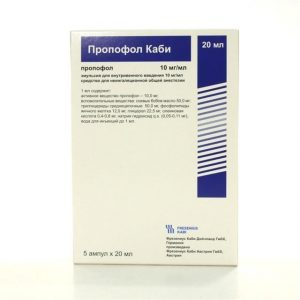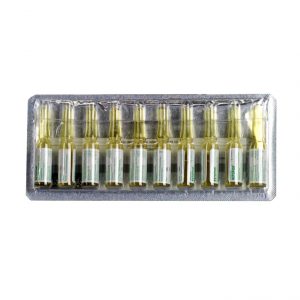Description
Release form
Tablets
Pharmacological action
Ketorolac has a pronounced analgesic effect, it also has anti-inflammatory and moderate antipyretic effects.
The mechanism of action is associated with non-selective inhibition of the activity of the enzyme cyclooxygenase 1 and 2, mainly. in peripheral tissues, which results in inhibition of the biosynthesis of prostaglandins – modulators of pain sensitivity, thermoregulation and inflammation. Ketorolac is a racemic mixture of [-] S and [+] R enantiomers, with the analgesic effect being due to the [-] S form.
The drug does not affect opioid receptors, does not inhibit respiration, does not cause drug dependence, does not have a sedative and anxiolytic effect.
The strength of the analgesic effect is comparable to morphine, significantly superior to other NSAIDs.
After oral administration, the onset of analgesic action is noted after 1 hour, the maximum effect is achieved after 1-2 hours.
Indications
Moderate to severe pain syndrome:
postoperative pain,
joint pain in injuries with ligament rupture,
dislocation,
stretching back and muscle pain.
Contraindications
hypersensitivity (including aspirin and other NSAIDs),
nasal polyps,
angioedema,
bronchospasm,
bronchial ulcer, gastric ulcer, gastric ulcer, gastric ulcer, dehydration,
high risk of postoperative bleeding or incomplete stop bleeding,
hematopoiesis,
cerebral hemorrhage,
early childhood (up to 2 years).
Use during pregnancy and lactation
Not indicated for use during pregnancy, it can only be used for health reasons, when the potential benefit to the mother outweighs the potential risk to the fetus.
If necessary, use during lactation should decide on the termination of breastfeeding.
Ketorolac is not recommended as a means for sedation, supporting anesthesia and for pain relief in obstetric practice, since it can lengthen the course of the first stage of labor. In addition, the effects of ketorolac associated with its inhibitory effect on uterine contractility and fetal blood circulation must be taken into account.
Special instructions
Use with caution in patients with impaired liver and kidney function, chronic heart failure, arterial hypertension, in patients with an erosive-ulcerative lesion of the gastrointestinal tract and a history of gastrointestinal bleeding, a history of blood clotting.
Caution should be exercised when using ketorolac in the postoperative period in cases where especially careful hemostasis is required (including after resection of the prostate gland, tonsillectomy, and cosmetic surgery), as well as in elderly patients, as The half-life of ketorolac is lengthened, and plasma clearance may decrease. In this category of patients, it is recommended to use ketorolac in doses located at the lower limit of the therapeutic range.
When symptoms of liver damage, skin rash, eosinophilia, ketorolac should be discontinued. Ketorolac is not indicated for use in chronic pain syndrome.
Influence on the ability to drive vehicles and control mechanisms
If drowsiness, dizziness, insomnia or depression appear during the treatment with ketorolac, special care must be taken during classes of potentially hazardous activities that require increased attention and speed of psychomotor reactions.
Composition
1 tablet contains ketorolac tromethamine – 10 mg.
Dosage and administration of
i / m, iv, for children only by injection.
The dose is selected individually, taking into account the severity of pain.
With a / m administration, a single dose is 10-30 mg, the interval between administrations is 4-6 hours.
The maximum duration of use is 5 days.
Maximum doses: for intramuscular administration – 90 mg / day for patients weighing up to 50 kg, with impaired renal function, as well as for people over 65 years of age – 60 mg / day.
Ketorolac is taken orally, once or repeatedly, depending on the severity of the pain syndrome.
A single dose is 10 mg, with repeated administration it is recommended to take 10 mg up to 4 times a day, depending on the expressed pain, the maximum daily dose should not exceed 40 mg.
When administered, the duration of the course should not exceed 5 days.
Side effects
nausea,
abdominal pain,
diarrhea,
drowsiness,
headache,
anxiety,
damage to the mucous membrane of the stomach and intestines,
pain at the injection site.
Drug interaction
With the simultaneous use of ketorolac with other NSAIDs, the development of additive side effects with pentoxifylline, anticoagulants (warfarin, heparin in low doses) may increase the risk of bleeding with ACE inhibitors – may increase the risk of renal dysfunction with probene concentration ketorolac in plasma and its half-life with lithium preparations – a decrease in the renal clearance of lithium and an increase in its concentration in plasma with f rosemidom – reduction of its diuretic action.
With the use of ketoralac, the need for opioid analgesics for pain relief is reduced.
Overdose
Symptoms (with single administration): abdominal pain, nausea, vomiting, erosive and ulcerative lesions of the gastrointestinal tract, impaired renal function, metabolic acidosis.
Treatment: symptomatic (maintenance of vital functions of an organism). Dialysis is ineffective.
Storage Conditions
In a dark place at a temperature of 15 to 25 ° C.
Keep out of the reach and sight of children.
Shelf life
2 years
Deystvuyushtee substance
Ketorolac
Conditions of release from drugstores64pk16 Terms and conditions of vocational
dosage form
tablets
Possible product names
Ketorolac tablets 10 mg, 10 pcs.




